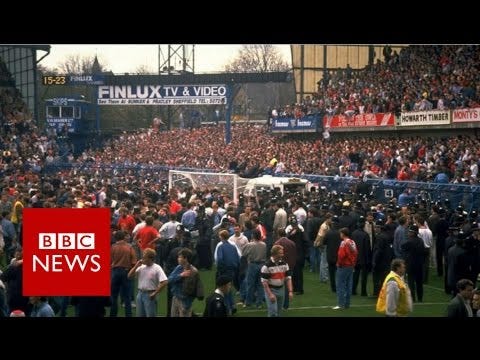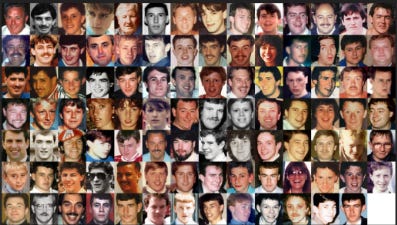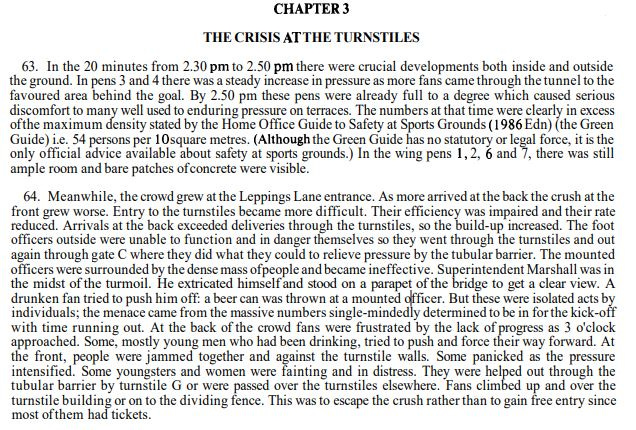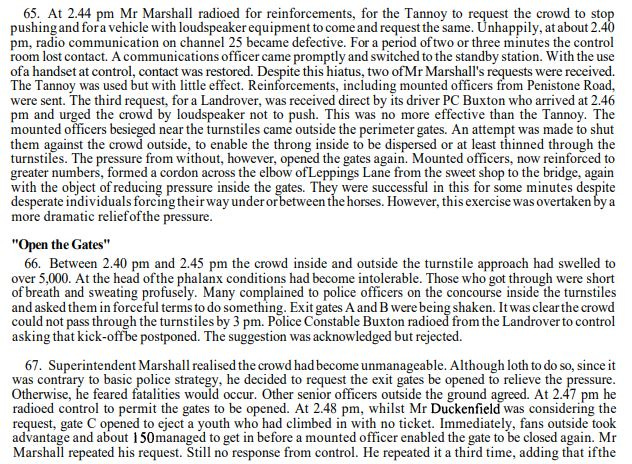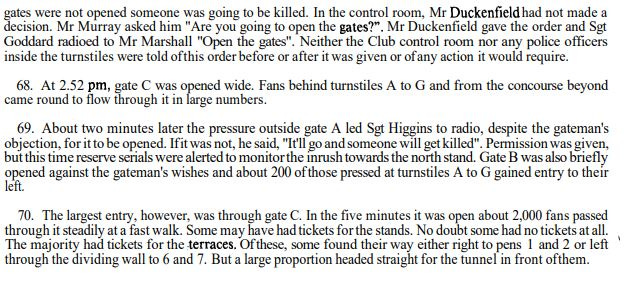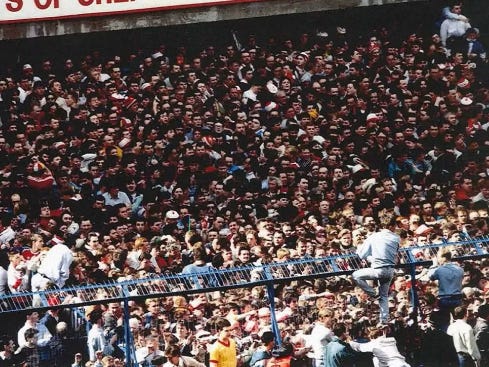On Saturday 15 April 1989 fine spring weather prevailed over the Yorkshire city of Sheffield. The FA Cup Semi-Final was to be played at Hillsborough stadium - the home of Sheffield Wednesday Football Club.1
The rival teams were Liverpool FC (Manager Kenny Dalgleish b. 1951) and Nottingham Forest FC (Manager Brian Clough 1935-2004 ). Kick-off was set for 3 pm.
The two teams had met at Hillsborough the previous year (1988) when the score was Liverpool 2: Nottingham Forest 1. Before that match, the Police decided that separate sections of the Hillsborough Stadium were to be allocated to rival fans. The sections allocated were decided by the direction from which the fans of each team predominantly approached the ground. Liverpool was to be in the north and west sides of the ground with access from Leppings Lane. Nottingham Forest was to be at the south and east sides with access from Penistone Road. For the 1989 match, the same arrangement applied.
As kick-off approached, large numbers of Liverpool fans arrived at the turnstiles on Leppings Lane. Police Officers, some mounted, were present but they had difficulty managing the numbers seeking entry to the ground.
The events that followed can be seen in this short video -
That evening, BBC’s Match of the Day programme was presented by Desmond Lynam (b 1942) and the late Jimmy Hill (1928 - 2015). They were both present at the match and described the tragedy. The programme also contained an interview with Peter Wright (1929 - 2011), then Chief Constable of South Yorkshire Police -
The stadium was visited the same day by the Minister for Sport Colin Moynihan MP (b. 1955). Prime Minister Margaret Thatcher (1925 - 2013) visited the following day.2
Largely due to crushing on the terraces, 95 Liverpool fans were killed that afternoon and 2 were to die later.3
The Taylor Inquiry
Sir Peter Taylor - then a Lord Justice of Appeal (and later Lord Chief Justice) - was appointed by the government to conduct an inquiry. [Peter Taylor - Baron Taylor of Gosforth - 1930 to 1997]. Within 8 months, the Inquiry published two reports -
Interim Report - August 1989 and Final report - January 1990
Taylor’s Interim Report stated - “The immediate cause of the gross overcrowding and hence the disaster was the failure, when gate C was opened, to cut off access to the central pens which were already overfull.”
The events leading to the opening of Gate C are set out in the interim report and are worth quoting in full -
We therefore see that a request from P.C. Buxton to delay the kick-off was rejected. Also, requests were made by Superintendent Marshall to the senior Police Officer at the ground (Chief Superintendent David Duckenfield) for Gate C to be opened. The first request was at time 2:47 and Marshall made two further requests. Duckenfield did not immediately decide to order the gate to be opened but ultimately did so and it was opened at time 2:52. That fateful decision allowed fans to enter the already full central pens.
Severe overcrowding resulted with people unable to escape to the pitch because of the fencing - shown here.
Kick-off took place just before 3pm but the match was abandoned at 3.05½
Taylor’s final recommendations are at Part V of the Final Report. In particular, it became the norm for larger stadiums to be all-seater. At the time of Hillsborough, standing at football grounds was commonplace and Hillsborough was no different to most other grounds although Coventry’s former stadium (Highfield Road) was all-seater from the early 1980s - Highfield Road.4
Lord Justice Taylor’s reports were just the beginning of what was to be a long and arduous search for the full truth on the part of the families of victims.
Continued in Part 2
Sheffield Football Clubs and Stadiums - Football-Stadiums.co.uk
Hillsborough: at last, the shameful truth is out (theconversation.com)
Anthony Bland died 1993 and Andrew Devine in 2021
Licensed standing areas are now possible - see Safe standing in seated areas - Sports Grounds Safety Authority. All-seater stadium - Wikipedia

